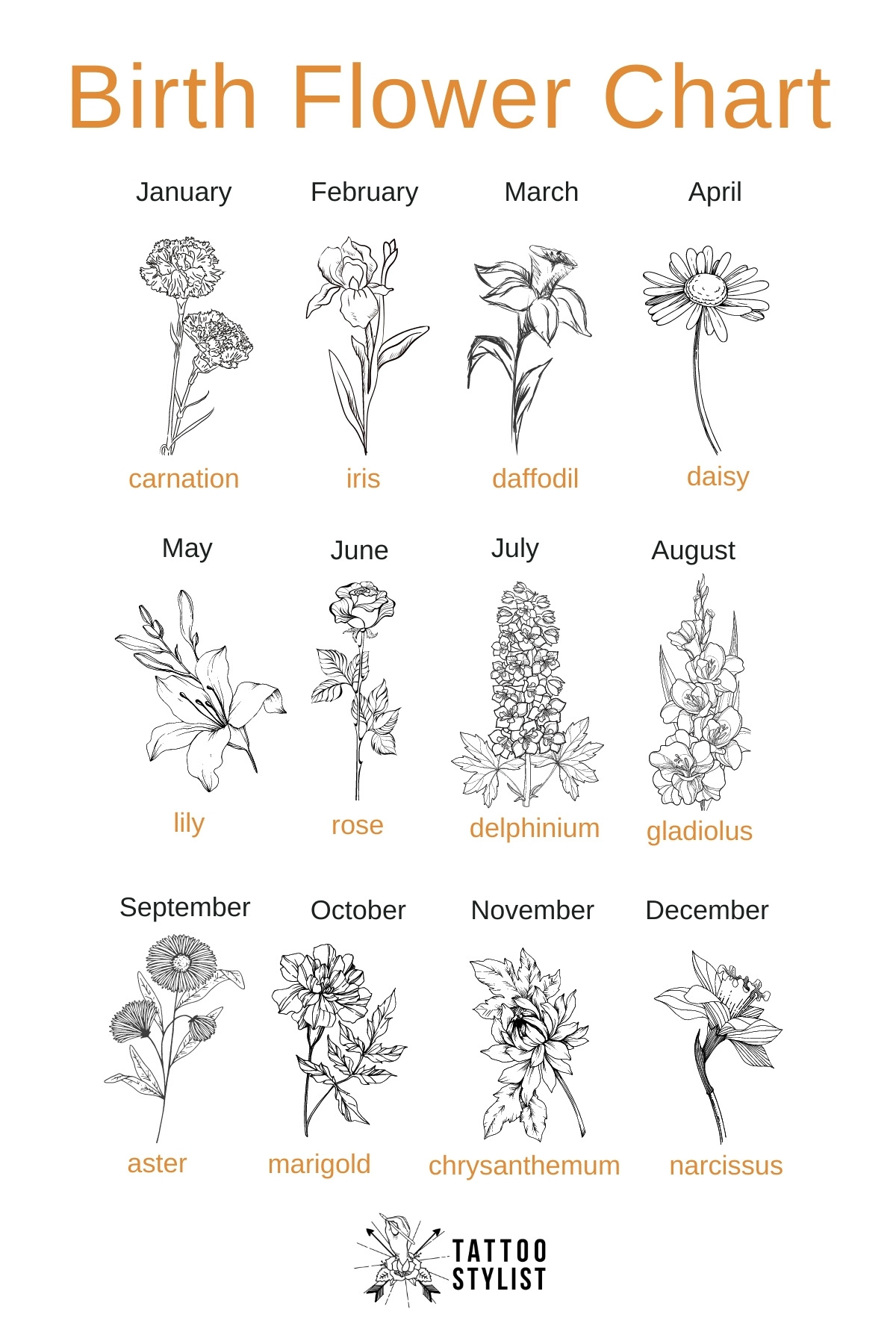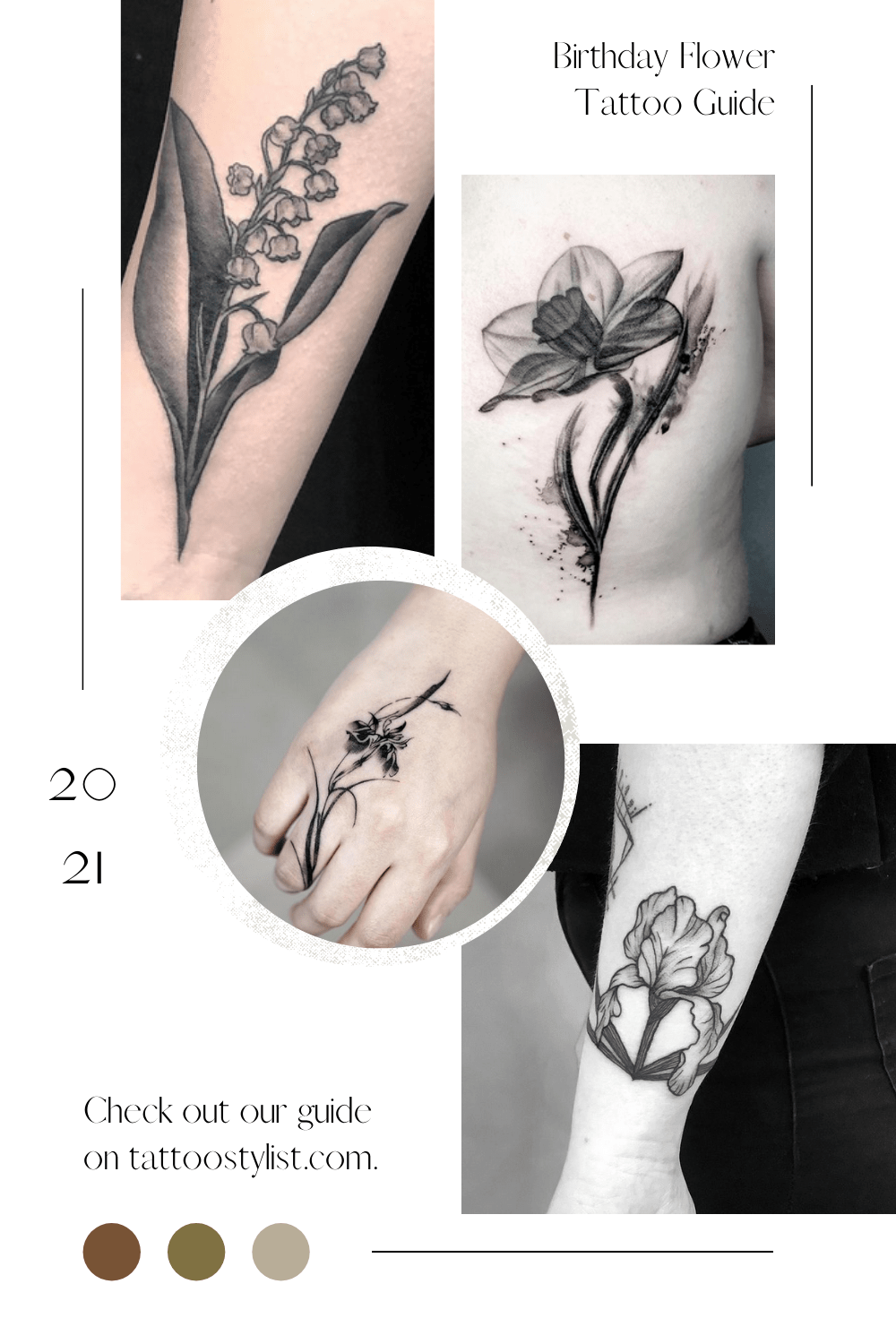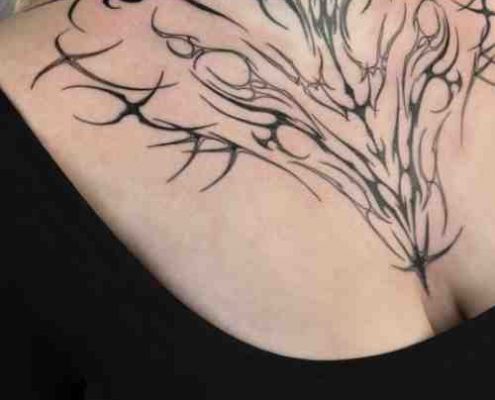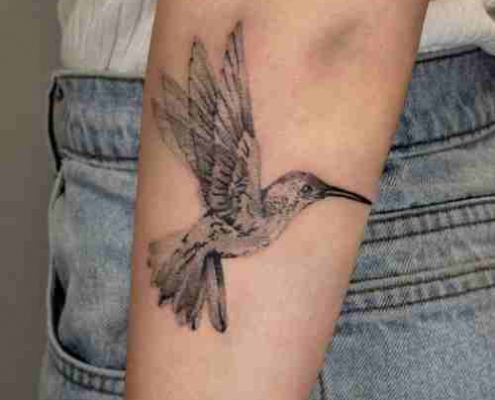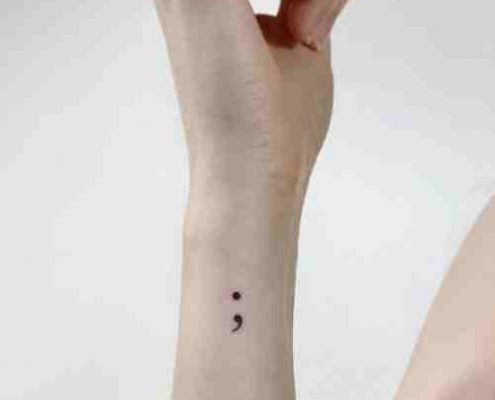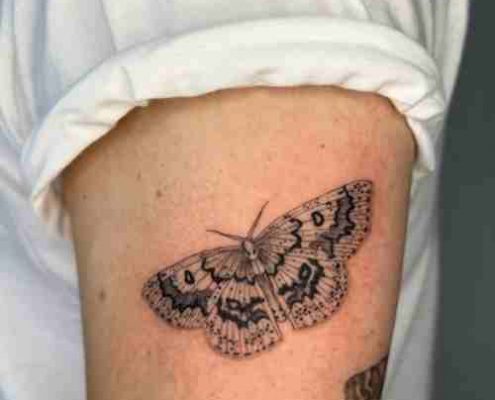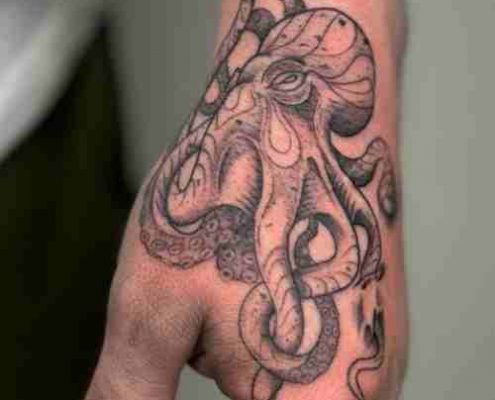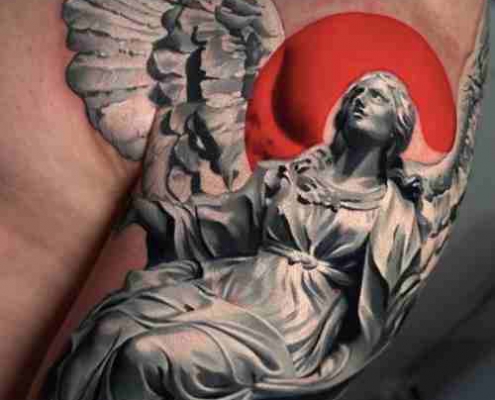Birth Flowers & Over 50 Best Birthday Flower Tattoo Ideas
Birth flowers and their meanings have been around for more than 200 years. The tattoos that feature them are a natural consequence of people wanting to add more meaning to their ink.
Flowers can hold a wealth of meanings – from the flower, the plant, color, etc. The June birthday flower rose in particular holds a wealth of meaning, with the red rose often symbolising one of the purest expressions of true love whereas yellow roses carry the meaning of true friendship.
So, it was no wonder the flowers came to be connected with specific months to symbolize them. In the same manner as Zodiac signs, birth flowers are assigned to months and are attributed to specific characteristics and personality traits.
Many people follow their birth month’s gemstone and assigned flower.
Further customisations and building upon the flower base is possible with adding some animals, especially other symbolic insects like bees, or some geometric patterns, mandalas, evil eyes and similar.
If you’re looking to get inspired for your birthday flower tattoo design, find our design guide and best examples below.
Every Tattoo Has A Story – How Did Birth Flowers Came To Be?
Floriography (language of flowers) is a means of cryptological communication through the use or arrangement of flowers.
Ancient Egyptian, Greek, Roman, and Chinese cultures have all included written records of their assignment of meanings to certain flowers.
It began in Turkey in the 17th century and flourished during the Victorian era of the mid-19th century especially. During this time, it was not considered appropriate to display or talk about feelings and emotions; consequently, people used flower bouquets to communicate secret meanings to one another.
In the late 19th Century sunflowers became very fashionable, for example, due to their meaning of happiness, joy and longevity.
Gifts of blooms, plants, and specific floral arrangements were used to send a coded message to the recipient, allowing the sender to express feelings which could not be spoken aloud in Victorian society.
In the Victorian era, the intense love for flowers blossomed even further, which lead to coining the term of the birth flowers and its symbology being more and more used.
Nowadays the birth flower references have found their fit in the tattoo culture, making them a common symbol for tattoos for women to reference family. It’s also a common addition to men’s tattoos, too, for the same reason.
January: Carnation, Snowdrop
January, as gray and gloomy as it can be in certains parts of the world, but some cold areas still allow for flowers to grow. That’s where carnations come in.
Carnations, also known as Gillyflowers, symbolize love, fascination and distinction. The love meanings is why they are commonly worn or gifted on Mother’s day.
As they come in so many color variants, each shade bears a different meaning.
The other flower symbolizing January is snowdrop – a common touch of spring in the snow-covered backyards and fields.
Snowdrop as a January flower stems from the Bible actually, with the story saying that an angel created snowdrops from snowflakes to give Adam and Eve hope to survive the seemingly never-ending harsh winter in the Garden of Eden.
These beautiful tiny white flowers have their own little heating system, allowing them to melt the snow around them and grow.
That said, hope and strength are the main symbols of snowdrop!
February: Violet, Primrose, Iris
The purple, delicate violet flower is the perfect symbol of February – the month of Valentine’s Day and love.
The flower symbolises faithfulness, humility and chastity.In old English, the name of the flower was heartease, further connecting it with love and pure emotions.
In the Victorian times, when one would gift violet, it would meang “I’ll always be true”.
Another delicate flower and a favorite of plant lovers is primrose.
Its symbolism ties it deep with the love month February, as the message it tells is that you cannot live without someone.
This flower of European origin blooms as soon as the winter retreats, which makes it a perfect flower for this time of the year.
Primroses are colorful perennials of European origin that are not actually related to the rose. Among the first to bloom as winter retreats, they’ll multiply each year if given a little shade and moist (but not soggy) soil.
The third flower of February is iris, a beautiful purple flower named by a Greek goddess. The iris represented the connection between heaven and earth, which is why it was often planted on the graves.
It became popular again during the Middle Ages, eventually becoming the symbol of the French monarchy. The fleur-de-lis, as they call it, is still their national symbol.
People born in this month are said to have the same characteristics as the iris; wisdom, faith, and valor.
March: Daffodil
The onset of spring is almost simultaneous with the arrival of daffodils – the flower of March.
Also known as jonquil or narcissus, it’s a flower or bright colors like white, yellow, pink, blue and orange.
When it comes to symbology, the meaning is always connected with friendship and happiness.
In some parts of the world, where this flower is known as narcissus, it is often connected to egoism and conceit as of the mythical person in the legend.
But the same story gives it also other meanings such as rebirth and new beginnings. This also comes from the fact that daffodils are the first ones to bloom out of the winter, signifying the beginning of nice weather.
April: Sweet pea, Daisy
The sweet pea flower represents April with its range of soft colors that symbolize the gentle weather of spring.
Other meanings are please or even good-byes.
The Victorian people used it as a part of bouquets to convey gratefulness.
Daisies are April’s birth flower but also one of the most known symbols of purity and chastity.
However, there is a double side to it. It’s a symbol of innocence, but also of secrecy. The secrecy comes from the origin of it’s name – day’s eyes – meaning its petals would only open by day, but close at night.
The flower is said to represent qualities such as purity, all-conquering love, innocence and even a childlike playfulness. These qualities can be seen to be apt for those individual who are born under the sign of Aries and are considered to be happy-go-lucky, youthful, caring, energetic and intensely passionate.
May: Lily of the valley
The month of May is associated with the Lily of the valley flower. It is generally white in colour. The flower conveys sweetness and humility. In the Victorian era, it was given to convey the romantic message ‘you have made my life complete’
When Lily of the Valley blooms, it’s said to be the return of happiness — which makes sense, if you believe that April showers bring May flowers. The tiny bell-shaped petals signify humility and sweetness, but don’t be fooled: the flower can be very poisonous.
The seasonal blooming of Lilies of the Valley have been associated with numerous mythical and religious stories, which lend it special qualities and cause it to invoke certain feelings over others. In this case, one of the most famous stories associated with the blooming of the flower is that the Lily fell in love with the singing of a nightingale and bloomed only when it heard its song, which it sang only in the month of May.
June: Rose
The birth flower for those born in June is rose. A classic, roses are so famous and common for their associations with things love, romance and passion, that those meanings pour into the birth month as well.
In history and culture, roses have played an immense role in some of the greatest events that molded the very nature of humanity during a particular period.
These gorgeous, elegant flowers come in a whole palette of colors, each bearing their own special meaning.
July: Larkspur (Delphinium)
The July birth flower is Larkspur. It’s elongate, tall form gives out an openness of heart to the world.
The name actually comes from old Greek “delphis” which is, obviously, translated as dolphins. The reason behind the names comes from the conical shape that reminds of the nose of this favorite sea creature. That’s why its other name is delphinium, and the sea connection comes with associations of broad horizons, potential and better future.
Gifting someone this flower comes with the message of giving them the push towards transformation, giving them a nudge that it’s time to rediscover the beauty of this life and adventure.
August: Gladiolus, Poppy
August’s birth flower is one hand the wonderful gladiolus. This colorful tall flower can come in red, pink, white, yellow and orange.
Main symbols of gladiolus are strength and character. It comes from the fact that the latin word that gave it its name means sword. Greek soldiers also wore them to war to protect them from harm and death.
Another birth flower for August is the gentle red poppy flower. This delicate flower however holds very deep meanings like sleep, peace and even death.
The death meanings comes from the fact that poppy is connected to opium produced from it, and then combined with the bloody red color.
When placed on tombstones, they symbolize death and eternal sleep.
September: Aster
Aster is the birth flower of people born in September. So much so, that it’s sometimes also called September flower. Very colorful, daisy-like flower, its name actually comes from the Greek word for star.
The main symbols of aster flower are love, faith, wisdom and color.
Long connected with myths and legends, Greek folklore says the flower was created by the goddess Astraea, whose tears became this beautiful star-shaped flower. This gives it the symbolism of love and undying devotion.
The different colors of the flowers also signify different feelings and emotions. For instance, the purple Asters are said to signify royalty and wisdom, the white ones are a representation of purity and innocence, the red asters symbolize undying devotion, and the pink aster act as a symbol of love and sensitivity.
October: Marigold
Marigold or Calendula is the flower associated with October.
In the Eastern world, especially in the Hindu culture, Marigold has come to also be a main flower of festivities such as Diwali.
The anglo-saxon culture, on the other hand, connects marigold with sorrow and sympathy, perhaps derivative of its original symbolic association with death, despair and grief in the traditions of Mexico, as in the Day of the Dead.
All the while the Victorian culture linked it to the cruel treatment of a loved one.
However, the flower has evolved to take up numerous other values, such as creative impetus, cheerfulness and beauty, often associated with the warmth of the rising sun.
November: Chrysanthemum
Chrysanthemum is the November birth flower, and as lovely as it is it stands for cheerfulness and love.
Eastern Culture celebrates chrysanthemums in many parts of the Asian continent. In China, according to Feng Shui, Chrysanthemums bring happiness and laughter in the house. There it also symbolizes long life and vigor, thereby being a preferred gift for the elderly
In addition to that, there is an entire festival dedicated to chrysanthemums blooming in Japan, better known as the “Festival of Happiness”.
The Emperor loved the flower so much that he adopted it as his official seal. Additionally, this flower’s importance in their culture also goes back to the way this flowers systematically unfolds its petals. This sign of immense perfection is then connected to the perfection that the Japanese people try to uphold and achieve in their everyday practice, too.
December: Holly, Poinsettia
The first December flower is holly – a common symbol of domestic happiness. Its other meanings are defense and protection.
This is drawn from the fact that holly is a poisonous berry that protects the entire plants with its venom. Holly is also said to protect from thunders, lightnings, and further along from witchcraft.
The more commonly known December birth flower is definitely poinsettia. This flower is well-connected with Christmas, decorating every home in the Western world during the last weeks of the year.
While considered by the ancient Aztecs to be symbols of purity, in today’s language of flowers, red, white or pink poinsettias symbolize good cheer and success and are said to bring wishes of mirth and celebration.
Are you looking for a custom birth flower tattoo design? We got you.
Our expert tattoo artists will provide a quick initial draft to get you going.
Happy inking ❤
Read later: Would you like to save this post for future reading or use one of the ideas? Save THIS PIN to your Tattoo Ideas Board on Pinterest:

Milena Petrovic
About the author
Milena has decided to start an organization that will create a safe environment for everybody to get their first, second or third tattoo and to encourage young people to transform their ideas into tattoos safely, with talent and vision.
You can find her writing about tattoos on Quora or updating our Pinterest profile with awesome tattoo ideas!



